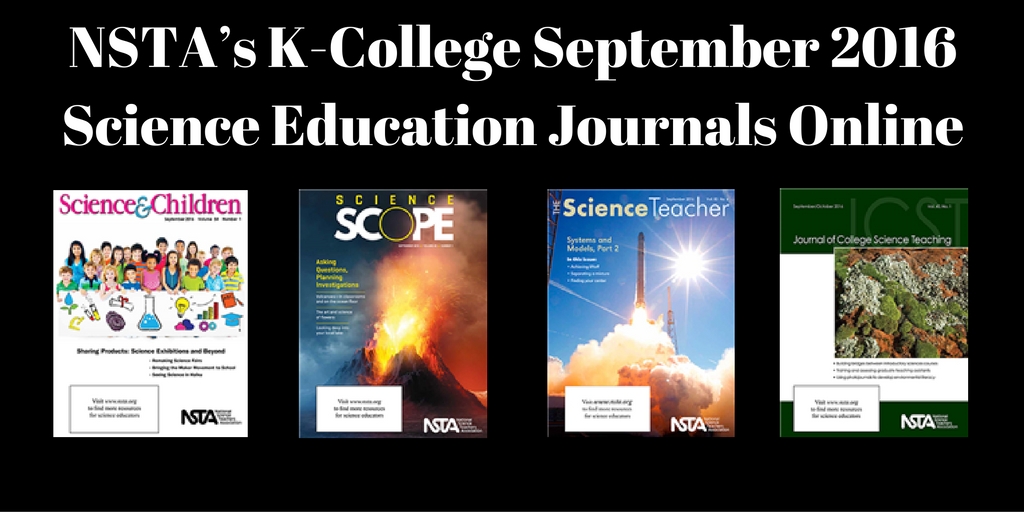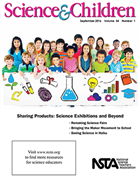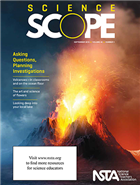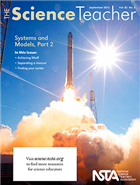NSTA’s K-College September 2016 Science Education Journals Online
By Korei Martin
Posted on 2016-09-06
Want to know how to maximize the products your elementary students make? What about getting fresh ideas for your middle school classroom? Looking for ideas on how to help your high school students understand the natural world through the construction of scientific models? Want to engage college students in meaningful outdoor learning experiences? The September K–College journals from the National Science Teachers Association (NSTA) have the answers you need. Written by science teachers for science teachers, these peer-reviewed journals are targeted to your teaching level and are packed with lesson plans, expert advice, and ideas for using whatever time/space you have available. Browse the September issues; they are online (see below), in members’ mailboxes, and ready to inspire teachers.
When students create products to demonstrate learning, we need to think beyond how those products are used to guide assessment. In this issue, we also consider all of the experiences and skills students use and develop through the creation of their products.
Featured articles (please note, only those marked “free” are available to nonmembers without a fee):
- Free – Bringing the Maker Movement to School
- Celebrating Science With the Community
- Free – Editor’s Note: Creating Meaningful Products
- Firefly, Firefly
- Remaking Science Fairs
- Seeing Science in Haiku
- Table of Contents
We’d like to welcome you to the new and improved Science Scope, which features an updated design, new content, and most importantly, a new editor—Patty McGinness (see “From the Editor’s Desk”). After you’ve had a chance to review all the changes we’ve made to your journal, please let us know what you think so we can continue to improve and better serve your needs.
Featured articles (please note, only those marked “free” are available to nonmembers without a fee):
- A Closer Look at Flowers: Exploring Structure and Function in Science and Art
- A Middle School Lake Study: Connecting Disciplines Through a Hands-On Experience
- Free – From the Editor’s Desk: A Welcome From the New Editor
- Free – Investigating Axial Seamount: Using Student-Generated Models to Understand Plate Tectonics
- Teacher to Teacher: Start the School Year With an Authentic Activity
- Science for All: Creating Student Buy-In on Day One
- Table of Contents
In every scientific discipline, the most important overall goal is to develop understanding of how the natural world works through the construction of scientific models. This issue continues our look at systems and models that we started in the Summer issue. As you’ll see, scientific models come in many forms. In “Achieving Liftoff,” students must develop models to explain what happens during a rocket launch. In “Scaling Up,” students use plant growth to understand climate change. In “Separating a Mixture,” they build models to explain ionic interactions. As you work through this issue, think about how you can incorporate model building, a central science and engineering practice, in your own classroom.
Featured articles (please note, only those marked “free” are available to nonmembers without a fee):
- A Twist on Measuring Catalase
- Free – Achieving Liftoff
- Free – Editor’s Corner: Science Practice in the Post-Truth Era
- Find Your Center
- Focus on Physics: When Our Round Earth Was First Measured
- Scaling Up
- Table of Contents
Journal of College Science Teaching 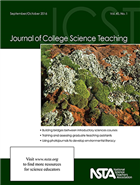
Looking to engage students in meaningful outdoor learning experiences? See the article about a pilot program in which preservice teachers partner with classroom teachers to provide students in grades 3 and 4 with Chesapeake Bay watershed educational experiences. Learn about a promising, active learning assignment in which students identify their own questions relevant to lecture content and provide logical answers. And don’t miss the article about the importance of teaching “work checking”—an essential component skill of monitoring and reflection during problem solving that may reveal errors or inconsistencies.
Featured articles (please note, only those marked “free” are available to nonmembers without a fee):
- Building Bridges Between Science Courses Using Honors Organic Chemistry Projects
- Free – Feet Wet, Hands Dirty: Engaging Students in S
cience Teaching and Learning With Stream Investigations - Integrating Technology in Today’s Undergraduate Classrooms: A Look at Students’ Perspectives
- Research and Teaching: Assessment of Graduate Teaching Assistants Enrolled in a Teaching Techniques Course
- Research and Teaching: Reenvisioning the Introductory Science Course as a Cognitive Apprenticeship
- Self-Directed Learning With Feedback
- Table of Contents
Get these journals in your mailbox as well as your inbox—become an NSTA member!
The mission of NSTA is to promote excellence and innovation in science teaching and learning for all.
Follow NSTA
Disclaimer: The views expressed in this blog post are those of the author(s) and do not necessarily reflect the official position of the National Science Teaching Association (NSTA).



